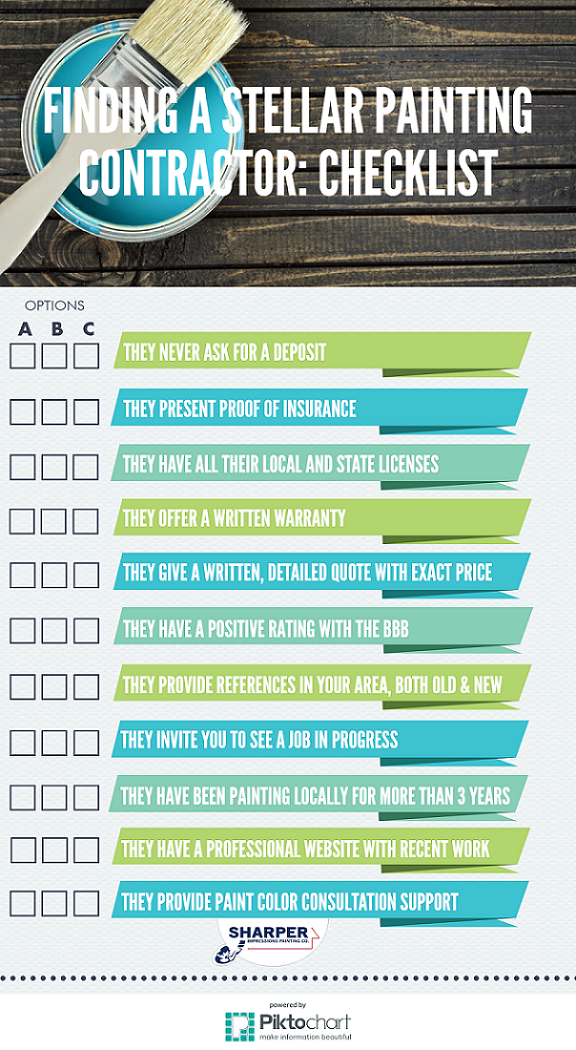Submerse Yourself In The Effective Results Of Paint On Your Feelings And Mood By Examining The Ways In Which Color Options Can Influence Your Emotional Well-Being
Submerse Yourself In The Effective Results Of Paint On Your Feelings And Mood By Examining The Ways In Which Color Options Can Influence Your Emotional Well-Being
Blog Article
Personnel Writer-Wyatt Kidd
When it concerns choosing paint shades for a room, the choices made expand past plain aesthetics. The psychology of color looks into just how different hues can affect our emotions and mental well-being, forming the atmosphere of an area in extensive ways. Comprehending the effect of shade on mood can lead to deliberate and tactical design choices that accommodate boosting various elements of our daily lives. By discovering https://archerydqbk.thechapblog.com/31255228/trip-with-the-fascinating-globe-of-property-paint-patterns-and-figure-out-just-how-an-easy-color-modification-can-dramatically-uplift-the-state-of-mind-of-your-home between color and psychology, one can discover the subtle yet effective methods which paint selections influence our emotional experiences within an offered atmosphere.
The Effect of Color on Emotions
Frequently, the shades we border ourselves with can significantly affect our mood and general well-being. The effect of color on feelings is a well-researched area within psychology and interior decoration.
Warm shades like red, orange, and yellow are known to stimulate sensations of energy, warmth, and comfort. These hues can stimulate discussion and produce a cozy setting in an area.
In contrast, cool shades such as blue, green, and purple tend to have a soothing result, advertising leisure and tranquility. These shades are often liked in bed rooms and workplaces to produce a feeling of tranquility.
In addition, the strength and saturation of colors play a critical role in identifying their psychological effect. Intense, vibrant colors can generate feelings of enjoyment and interest, while soft tones are more comforting and mild.
It is very important to think about the desired psychological response when picking paint colors for various areas in your house or workspace. By recognizing the psychology of color, you can create environments that sustain your psychological health and enhance your total state of mind.
Picking the Right Paint Colors
Comprehending the psychology of shade and its effect on feelings can direct individuals in selecting the best paint colors for their space. When picking paint shades, it's essential to take into consideration the state of mind you want to develop in each space.
For example, relaxing colors like blue and eco-friendly are ideal for rooms and leisure locations, as they advertise a feeling of serenity. On the other hand, vivid tones like yellow or red can energize and promote conversation in social rooms such as living rooms or eating locations.
In https://www.creativebloq.com/buying-guides/best-art-easels to the psychological effect, the dimension and lighting of an area should also affect shade choices. Lighter hues can make a tiny room really feel even more sizable, while darker tones can include heat and comfort to bigger areas. https://housepainternearme33322.dreamyblogs.com/32288230/upgrade-your-ambience-why-it-s-critical-to-work-with-an-industrial-painting-specialist-for-your-business appear, so it's critical to examine paint examples in various lights conditions before making a decision.
Eventually, selecting the best paint shades involves a thoughtful consideration of both emotional reactions and practical aspects to produce a harmonious and comfy living environment.
Creating the Desired Ambience
Attaining the wanted atmosphere in an area entails a calculated combination of color selections and lighting factors to consider. Color plays an important duty in setting the mood of a room. Cozy tones like reds, oranges, and yellows can produce a relaxing and welcoming ambience, best for areas where convenience is vital, such as living areas or bedrooms.
On the other hand, trendy colors like blues and environment-friendlies evoke a feeling of calm and leisure, making them optimal for locations where peace is desired, like restrooms or reflection areas.
Along with shade, lighting is one more necessary factor in shaping the atmosphere of an area. Soft, cozy lighting can boost the warmth of a room, while bright, trendy lighting can stimulate and uplift the state of mind. Dimmer switches or adjustable lighting fixtures supply flexibility, allowing you to adjust the lights to suit different tasks or moods throughout the day.
Final thought
Finally, the psychology of color shows the considerable effect paint selections can have on our state of mind and emotions within an area.
By recognizing exactly how various shades stimulate certain sensations and choosing paint colors as necessary, we can produce atmospheres that advertise power, convenience, leisure, or excitement.
Thoroughly selecting the appropriate shades can assist us to affect our mood and overall wellness in an offered area.
